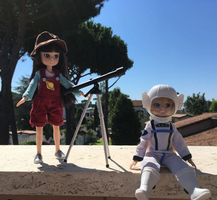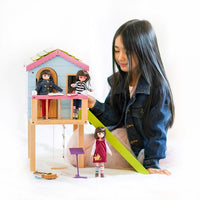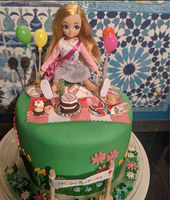A doll, by its simplest definition, is a figure of a human or animal which is made in close likeness to the ‘real thing’, either as a kid’s toy or a religious symbol. The concept of a doll dates back to the oldest of civilisations such as Ancient Rome, Egypt, and Greece. Dolls over the years seem to be made from whatever materials are available at the time or in the area of the world. For example, in the more ancient of civilisations, dolls were made from wood, bone, or clay. As far as archaeology is concerned, it seems as though dolls were the oldest ‘toy’ that can be found in old civilisations. Wooden paddle dolls seem to be the oldest complete doll found as they were found buried in Ancient Egyptian burial grounds and tombs which date back all the way to 2000BC. Dolls have a wide array of purposes; they can be simply for entertainment and enjoyment but can also act as protection and religious or spiritual artifacts.
The Early Days of Doll Manufacturing:
Dolls that were found of Inuit descent were made mostly of bone and adorned with fur to decorate them. The North American native people would make apple dolls out of dried fruits, and even sometimes out of corn husks. Corn husk dolls, for example, do not even have faces etched into them. Pennywoods were wooden doll figures that were fashioned by olden day settlers; sometimes fashioned out of wood and sometimes rag dolls. Dolls in the early days varied in creation, make, and look.
Terry Crews, a journalist at Write My X and 1day2write, noted, “Russian dolls, designed in the late 19th century, were called ‘matryoshka’ dolls. They are hollow, and you have probably seen them online or in shops before as they as hollow and can be stacked inside of one another.” They are usually painted varied colours and decorated fashionably and then varnished on the outside. These dolls can either represent Soviet figureheads or leaders, and sometimes even fairy-tale characters. These dolls can be tiny (when a baby is made, for example) or large, when a woman is carved out.
Germany holds its own history in doll making, as clay dolls were first fashioned in Germany in around the 13th century, followed by wooden dolls almost 2 centuries later. Its neighbour, France went with dolls adorned with beautiful and trendy clothes around the 1500s. This was around the same time that the Dutch and German people began to create peg wood dolls.
Dolls in our Modern World:
As the age of industry began, and the world changed, so did manufacturing processes. This not only applied to coal and steel, but to the processes surrounding doll manufacturing too. Doll heads began to be made with refined porcelain and attached to a body made with a different material, usually leather, wood, or composite material.
As Robin Pugh, a writer at Originwritings and Britstudent, commented, “As manufacturing began to change even more, the 1900s saw dolls made with polymer and plastic skyrocket in popularity because they were cheaper materials than the previously used leather, wood, and composite.” They were also proven to be longer lasting and easier to manufacture; and they also made dolls more adorable.

Suddenly, dolls became not only fun but also affordable and fashionable! Fashion dolls first turned up in the middle of the 1800s, originally constructed out of porcelain. These dolls were made to represent modern fashionable ideals and were closely followed by the Barbie doll which appeared in 1959. Barbie soon gained competition when Bratz dolls and action figures came into the market, in 2001 and 1964 respectively.
Bobble head dolls were originally made out of paper-mache, but as most dolls moved into porcelain and then plastic, bobble head dolls did too! This doll bobbles with a large head and is often a touristy trinket. The end of the 20th century saw the era of customisation and personalisation be born, which bled into the doll world too; beginning the popularity of custom doll figures. Today, there are too many types of dolls to even count! It is crazy to see how far dolls have come and changed over the years due to culture shifts and modern manufacturing.
About the Author:
George J. Newton is an online business development manager for Academicbrits.com and PhD Kingdom. He has been happily married for ten years and has three children. He also contributes his work to Do My Coursework.
![]() Fast Shipping
Fast Shipping![]() Subscribe to our Newsletter
Subscribe to our Newsletter![]() 🌟 New Global Competition 🌟
🌟 New Global Competition 🌟
















